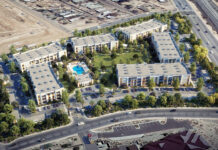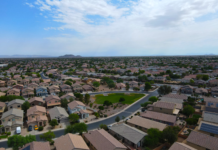
Maricopa’s skyline will be changing over the next 25 years, thanks to a citizen-driven program which, in part, addressed the city’s need for diverse housing options.
The 2040 Vision Strategic Plan, which was approved by the City Council in May, relied on input from community members to steer the future direction of the city.
“It was important for me to be involved in the forums about housing diversity because too often the community is built around older residents,” said Maricopa High School student Lillian Chitwood, who contributed to the issue project team assigned to housing diversity. “For example, we have an entire retirement community but not one apartment building.”
Zoning for alternative housing like apartments, condominiums, affordable housing and assisted living options for seniors are in the plan.
Chitwood said she plans to attend college after she graduates in two years but admitted she is not sure she will continue living in Maricopa afterward because of its lack of affordable housing.
“Since the CAC campus has started being built in Maricopa, many students are planning to stay within our city for financial reasons, but CAC does not have any dorm halls or student apartments nearby, so affordable housing is needed even more so,” Chitwood said.
Dana Burkhardt, who served as staff support for the 2040 Vision issue project team on Land Use and Well Planned Quality Growth and Development, said the city recognizes the need for more affordable housing.
“Without having an alternative, we face losing that particular citizen and those residents in our community going to other communities for that type of housing choice and vice versa,” Burkhardt said.
Not all citizens are convinced apartment housing will provide alternatives to the single-family homes that currently dominate the city’s landscape.
Ray Nieves rents a home in the Homestead North subdivision and doubts alternative housing would save residents money.
“I don’t think apartments and condos would be very cost-effective with the utility companies we have,” Nieves said. “Some houses rent for $600 and up, and I don’t think an apartment or condo would be able to beat that price and provide more of an upside than renting a house.”
Burkhardt, however, said attached family homes like apartment buildings offer greater density of people using virtually the same infrastructure as lower-density, single-family homes.
“Having more people on the same size utility is going to lower the cost overall for everybody and be more sustainable in that situation,” Burkhardt said.
Ensuring the senior population has housing options as they transition from independent to assisted living is also a goal of the plan.












![Alleged car thief released without charges Phoenix police stop a stolen vehicle on April 20, 2024. [Facebook]](https://www.inmaricopa.com/wp-content/uploads/2024/04/IMG_5040-218x150.jpg)

![3 things to know about the new city budget Vice Mayor Amber Liermann and Councilmember Eric Goettl review parts of the city's 2024 operational budget with Mayor Nancy Smith on April 24, 2024. [Monica D. Spencer]](https://www.inmaricopa.com/wp-content/uploads/2024/04/spencer-042424-preliminary-budget-meeting-web-100x70.jpg)


